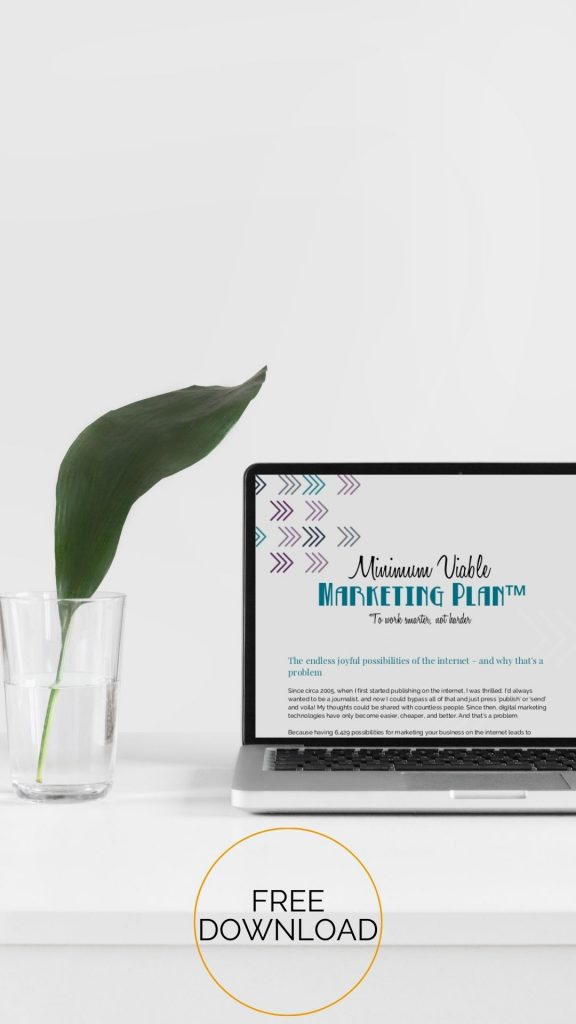Google has been good to me lately. The impact of Covid-19 means more people online, and more businesses prioritising digital marketing and online sales training. A journalist found me and featured me talking about starting a business during Covid, I’ve had new one-to-one business coaching clients, custom digital training, and course participants – all who’ve found me through Google.
Business blogging is a highly effective marketing strategy – businesses that blog generate 67 per cent more leads than those who don’t; 434 per cent more indexed pages, and 97 per cent more indexed links – all of which improve Google ranking.
Blogging also makes other marketing channels, such as email and social media, far easier and more effective. If business has been slow, you want your website to rank better on Google, and you need more leads, here’s how to turn your blog into an effective lead-generating machine.
Define your expertise
The first practical exercise in my Blogging for Business course is to define your expertise through choosing your blog categories. Five to seven blog categories define the parametres of what you can blog on. These need to strike a balance between being broad and defined, as well as commonly-used, popularly-Googled phrases.
This helps to keep your blog focused on the key topics that you want to rank for.
Stop telling people how to suck eggs
A common mistake I see blogs making is trying to explain how the expert does the thing they do. If I’m looking to engage a professional writer, I don’t want to know how to write a better About page, I want the writer to do it for me.
And because the blog writer may be scared of giving too much value away, they instead write a bland, simplified version that could be found anywhere.
‘How to’ blogs are a popular category, but there’s a way to do them well, that showcases your expertise without telling people how to do something that they’re not interested in learning.
Focus on showcasing the outcomes of working with your business. Dig into the problem you’re solving for people and share data to illustrate how much it’s costing them not to solve it. Talk about trends in your industry and why they’re important or relevant to what your prospective clients want to do.
Answer the FAQs of future you
Your frequently asked questions are a great port-of-call for creating useful, valuable and relevant marketing pieces. And while these should be answered in your marketing, over and over again, it’s the FAQs of your future that are useful to evolve your business.
If you have a plan or goal to do something in the future, you should be talking about it now, on your blog.
Too often, people treat their big dreams as delicate newborns in need of incubation. Good ideas desperately need feedback from the paying public before they can become truly great.
Your big dream needs to be exposed to the elements, to invite debate and feedback, to get accountability that comes with public exposure, and to begin to build its wings to fly.
Treat your blog as a roadmap to your future. Want to work for the government? Start blogging about key issues today. Want to turn your business into a social enterprise? Start today with blogs about this area of interest. Want to position yourself as a leader in your particular field?
Start writing on topics that future you wants to. You are a media company. Use this.
Don’t be boring
The internet is crowded. Especially if you’re new and small, you need to stand out. You need to put your stake in the ground and declare what you stand for – and what you stand against.
Alongside the three key pillars of content marketing – your marketing should be useful, valuable, and relevant to your ideal clients – we have to put something of ourselves in. Regardless of the size of your business or the nature of what you do, your business needs to have its own personality, style and tone-of-voice.
If your business were a clothes brand, which brand would it be? If you were an ice-cream flavor, which one would you be? If you were musician, who are you? And why should your audience care? The more personality in your marketing, the better it’ll work to magnetise your ideal clients to you and repel those who suck your life force.
Turn readers into leads
Make your blog ‘sticky’ like an ice-cream by converting your readers into leads – through your freebie email opt-in, otherwise known as a lead magnet.
Ensure you’ve got at least one of the following:
- A static or scrolling sign-up or graphic that links to your sign-up form in your sidebar
- A sign-up or graphic that links to your sign-up form at the bottom of every blog post (I use this plugin for WordPress – scroll to the bottom of this post to see it in action)
- A thin, attention-grabbing bar at the very top of your site for people to opt-in
- In-text graphics or calls-to-action to opt-in mid-way through your blog
Then consider what else you can do to publicise your freebie email opt-in. You’ve gone to considerable trouble to ensure this freebie email opt-in is useful, valuable and relevant to your audience, so give it the best chance of success by:
- Blogging about the topic of your email opt-in. Don’t give the whole kit-and-caboodle away, but highlight one or two key parts to pique people’s interests and publicise it
- Guest blogging on others’ websites about the topic of your lead magnet, making sure your bio links directly to your opt-in page
- Talking about your lead magnet on other people’s webinars
- Talking about your lead magnet on other people’s podcasts
Consider a social ad campaign for your lead magnet, once you’ve exhausted your own channels.
When something isn’t selling, know what the problem is
Finally, if you’re blogging and emailing and social media-ing, and you’ve got something that’s not selling, such as an online course, or professional services package, then before you blow everything up and go find a cave to hide in, consider whether you have a traffic problem or a sales problem.
Most business owners assume that it’s a sales problem, and they blame the offering.
It’s too expensive. People can’t afford it.
The offering is too long, too short, or not bouncy enough.
The name is all wrong. The colours aren’t matching. The font isn’t crisp enough.
But with almost every client that I work with who has this issue, it’s not a sales problem but a traffic problem. This isn’t guesswork but based on metrics.
Open up your Google Analytics account. Scroll to your key page (normally your sales page, but if your email list isn’t growing as quickly as you’d like, it could be your email opt-in page). Change the time period to a month and look for how many unique visitors you’ve had on that page. Now take the number of sales (or email opt-ins) you’ve had in that time period and divide it by this number to find your conversion rate.
For example, you’ve had 100 unique visitors looking at your sales page within a month, and one person has purchased. So you have a one per cent conversion rate.
One per cent is a normal conversion rate. Two per cent is good. Three per cent is great. My conversion rates for my sales pages are typically three per cent or higher because I’m doing the majority of my selling through email. So when someone clicks through to the sales page, they’re likely all warmed up and ready to buy.
Don’t burn the house down without first considering whether you’ve done enough to warm people up, through your blog, and through your email.
Want to learn how to use your blog to attract leads, improve your Google ranking, position yourself as an expert, and sell more? Then join my Blogging for Business course.





